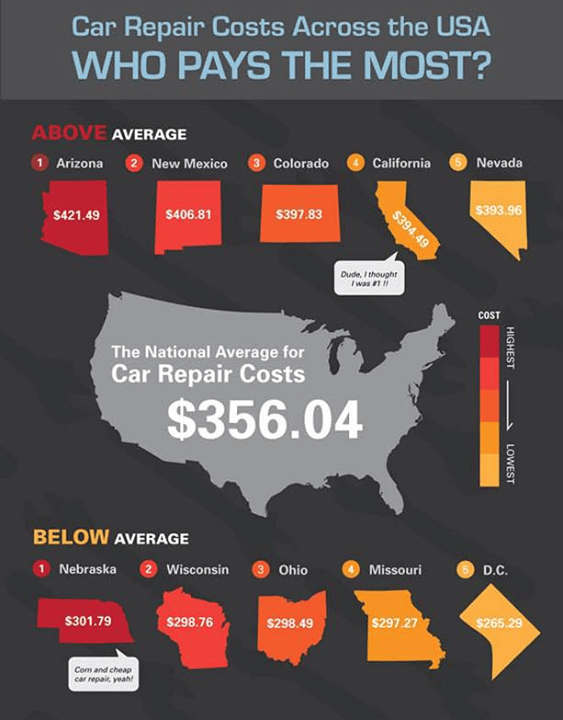When you lag the wheel, those radiant warning lights on your dashboard can be a bit puzzling. Do you recognize what they're attempting to tell you concerning your automobile's wellness? Understanding the importance of these lights is crucial for your safety and security and the longevity of your vehicle. So, the following time among those lights turns up, wouldn't you wish to analyze its message properly and take the needed steps to resolve it?
Common Caution Lighting and Interpretations
Determine typical caution lights in your car and recognize their meanings to ensure safe driving.
One of the most normal caution lights consist of the check engine light, which indicates problems with the engine or discharges system. If this light comes on, it's important to have your automobile inspected immediately.
The oil stress advising light suggests reduced oil stress, calling for immediate interest to stop engine damages.
Automotive Repair Cost Estimator blinking battery light may suggest a malfunctioning billing system, possibly leaving you stranded otherwise dealt with.
The tire pressure surveillance system (TPMS) light alerts you to low tire pressure, affecting automobile stability and gas efficiency. Overlooking this could bring about dangerous driving conditions.
The abdominal light shows an issue with the anti-lock braking system, endangering your ability to stop swiftly in emergencies.
Finally, the coolant temperature level alerting light warns of engine getting too hot, which can result in serious damages otherwise settled promptly.
Comprehending these usual caution lights will certainly help you address problems quickly and preserve risk-free driving conditions.
Significance of Prompt Interest
Understanding the common caution lights in your cars and truck is just the initial step; the relevance of immediately resolving these warnings can not be emphasized enough to ensure your safety when traveling.
When a caution light illuminates on your control panel, it's your auto's way of communicating a possible issue that needs attention. Disregarding these warnings can bring about much more serious problems later on, compromising your safety and possibly costing you extra in repairs.
Trigger attention to advising lights can protect against breakdowns and mishaps. As an example, a blinking check engine light might show a misfire that, if left unattended, might trigger damage to the catalytic converter. Addressing this without delay can conserve you from a costly repair.
Likewise, a brake system advising light might signal reduced brake liquid or used brake pads, vital elements for your safety when driving.
Do It Yourself Troubleshooting Tips
If you see a caution light on your dashboard, there are a few DIY repairing tips you can try before seeking expert aid.
The primary step is to consult your car's manual to recognize what the details warning light shows. Occasionally the concern can be as straightforward as a loose gas cap causing the check engine light. Tightening the gas cap may fix the trouble.
One more common problem is a reduced battery, which can cause different advising lights. Inspecting the battery connections for corrosion and ensuring they're protected might deal with the issue.
If a caution light lingers, you can try resetting it by disconnecting the car's battery for a couple of mins and after that reconnecting it. Furthermore, inspecting https://brake83951.onzeblog.com/31948744/a-comprehensive-look-at-diy-vs-expert-car-outlining-vital-insights , such as oil, coolant, and brake fluid, can help troubleshoot warning lights associated with these systems.
Verdict
Finally, recognizing your car's warning lights is essential for maintaining your automobile running efficiently and securely. By quickly resolving these notifies and knowing what they indicate, you can avoid costly fixings and potential breakdowns.
Bear in mind to consult your automobile's manual for certain information on each advising light and act accordingly to guarantee a trouble-free driving experience.
Stay informed, stay risk-free when driving!
